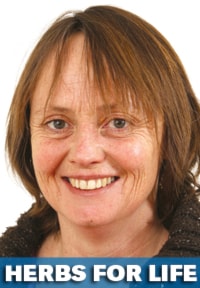There is no doubt in my mind that wild plants make the best medicine.
On sun-soaked mornings in July, Bubbaloo (my Lab) and I pack water bottles, paper bags, a trowel, a Swiss army knife and head out in search of wild plant medicine.
Harvesting freely growing plant’s for medicine is called wild crafting.
Many of the plants I wild craft grow quite close to home. Plants who enjoy living near people, herbalists consider friendly.
Medicinal plants found in lawns, gardens and places where people gather; generally have gentle yet effective medicine. One such plant is the dandelion.
It loves to grow near people. I never see it in the bush. Its too bad people don’t like dandelions.
But, I have already written my spring column on the dangers of poisoning dandelions and the medicine it provides for livers fraught with environmental pollutants. I will move onto other friendly plants.
I made up a fresh plant tincture of plantain this weekend.
In some ways, I kind of cheated with my plantain harvest this year. Bubbaloo, bounding through the garden on her way to the gate, planted plantain amongst the hyssops and sage last year.
Understanding the value of this plant, I let it grow. This summer, the biggest, boldest plantain plants I have ever seen came up in the same spot. I picked them and puréed them with a water alcohol mix over them.
The green slush now sits in a jar waiting to strained and bottled.
Every year I use about 1000 ml of fresh plantain tincture. Just this past month, I used up the last of my plantain tincture when a woman showed up at the clinic with a boil the size of a dime under her arm.
The pressure caused by the underwire in her bra against her skin had cut off the flow of the lymph through the area of her under arm. I had her dab plantain on cotton baton and tape it over the boil. In two days the pus drained from boil. It healed up in about a week.
In the cases of some medicine, one has to work harder to get at.
A couple of weekends ago, up by Drayton Valley, a friend and I harvested Sarsaparilla (Aralia nudicaulis) roots.
It is now ready to be bottled and taken to the clinic. Alberta’s sarsaparilla is a cousin to the famous Korean ginseng (Panax spp.). Some compare Korean ginseng to a Ferrari. In my opinion, speed is not always the best medicine. Albertan sarsaparilla is comparable to a ford tempo. It’s dependable, steady and predictable: that is the kind of medicine I prefer.
The Cree name for the sarsaparilla is rabbit root. Sarsaparilla saved many lives during long winters when deep snow made hunting impossible and only rabbits could be found.
A few roots tossed in rabbit stew increase the protein of the meal, warding off starvation.
I offer sarsaparilla to people who are timid as a rabbit. Sarsaparilla is high in androgens; the stuff testosterone is made of.
Testosterone is the hormone of courage and daring. Sarsaparilla is perfect when one feels too meek to confront life’s many challenges.
Wild crafting is not just a matter of heading out to pick medicine. There are certain rules wild crafters need to follow.
1. Know the plant well and its relationship to the environment it grows in.
2. Talk to the plant and offer something in exchange.
3. Be sure you have the right season, time of day and part of the plant (I know someone who picked a whole field of Canadian thistle, tincture the leaves and called it Milk Thistle medicine.
They had the wrong plant, the wrong part of the plant and the wrong location for the plant.
4. Harvest only where there is an abundance of the plant
5. Do not take the grandparent plant. (This is usually the biggest plant in the area.)
6. Take only what is needed and protect the rest.
7. If harvesting root, allow the plant to go to seed, be sure the seed will be sown.
8. Harvest from down hill to up hill.
9. Harvest on a day when there is time to prepare the plant properly.
10. Do not harvest endangered plants (see United Plant Savers).
Herbs for Life is written by Abrah Arneson, a local clinical herbalist. It is intended for information purposes only. Readers with a specific medical problem should consult a doctor. For more information, visit www.abraherbalist.ca. Arneson can be reached at abrah@shaw.ca
